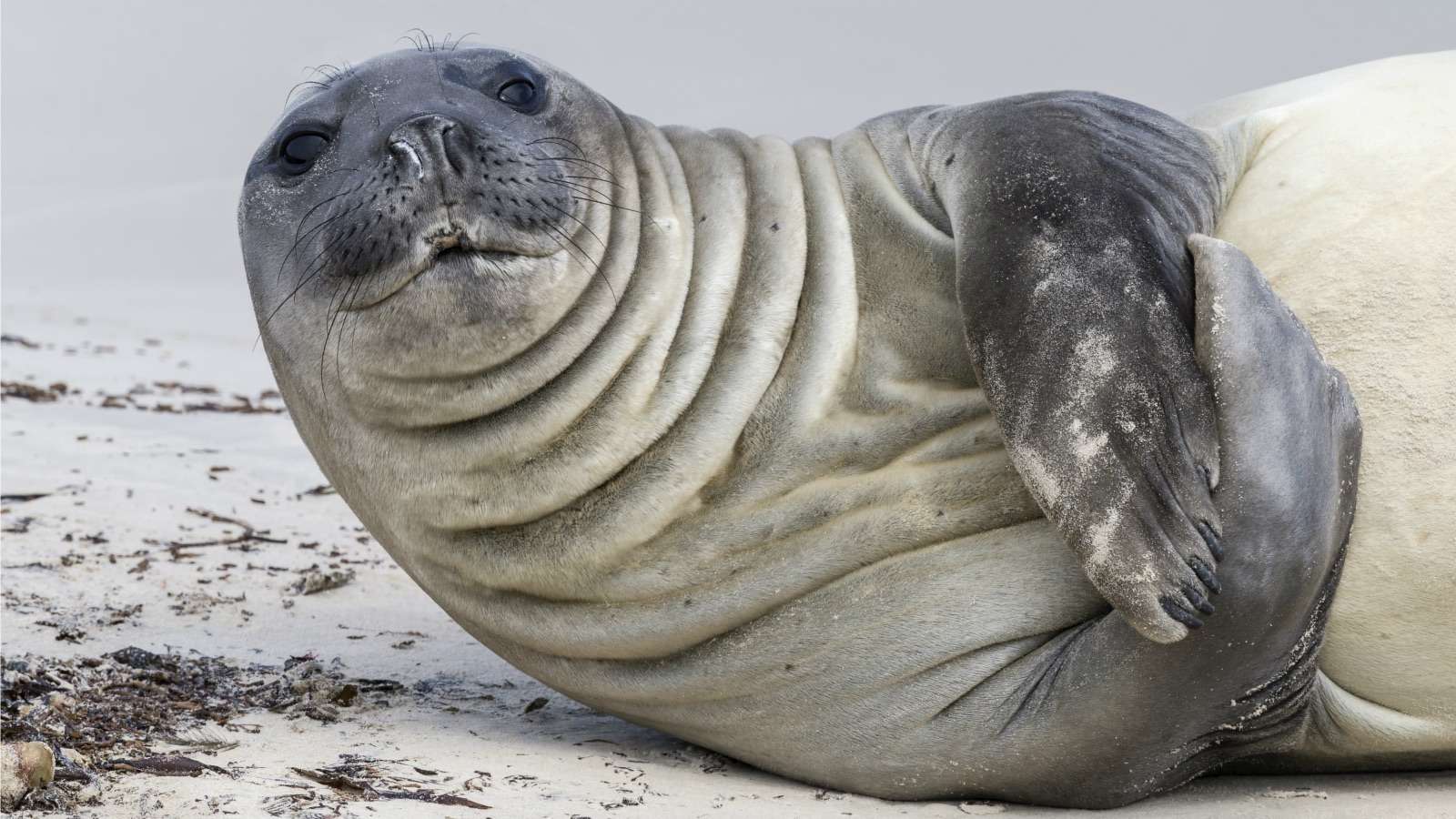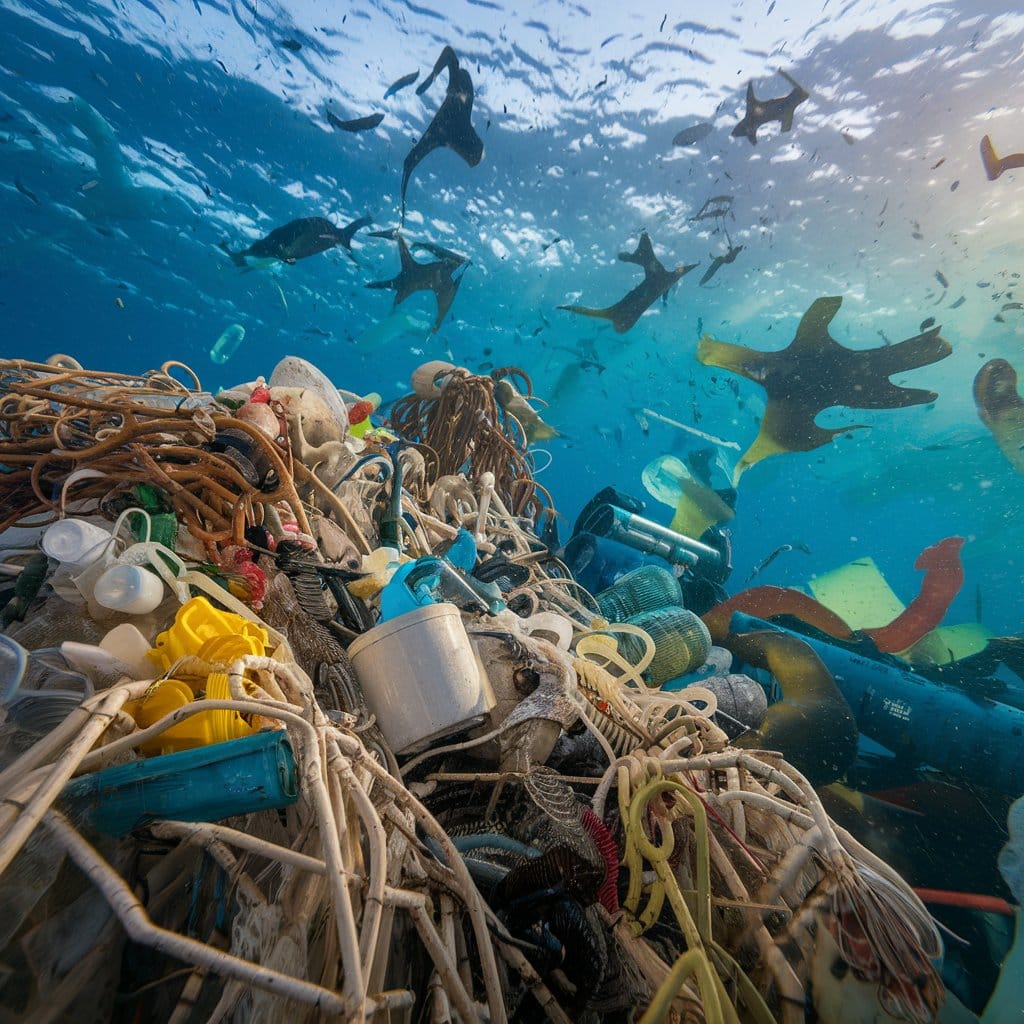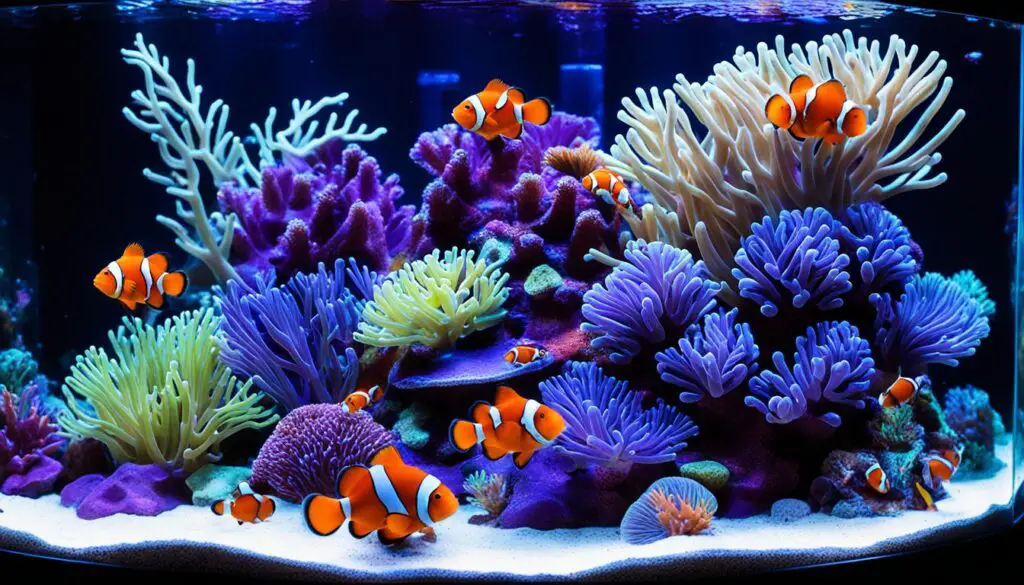Are Seals Going Extinct

Introduction
Are Seals Going Extinct: The fate of Earth’s diverse wildlife is intricately interwoven with the actions and choices of humankind. In recent times, the survival of many species has become a topic of global concern, and seals, with their captivating presence and ecological significance, are no exception to this growing apprehension.
Seals are a fascinating group of marine mammals, known for their agility both in water and on land. They inhabit the frigid polar regions, coastal areas, and open oceans, embodying a vital link in marine ecosystems. Their impressive adaptability has allowed them to thrive in environments ranging from the Arctic ice floes to the temperate coastlines.
However, seals are now facing an unprecedented and multifaceted set of challenges that threaten their existence. Factors such as climate change, habitat loss, entanglement in fishing gear, and hunting have taken a toll on seal populations worldwide. These remarkable creatures are also vulnerable to oil spills and pollution, which can have devastating consequences for their health and well-being.
To answer this question, we must delve into the various factors affecting seals, marine ecological importance, and the conservation efforts being undertaken to ensure their survival. The story of seals is not only a reflection of our relationship with the natural world but also a call to action to protect the delicate balance of life in our oceans.

Why are seals going extinct?
Human greed has led to the decline of many seal populations. In the past, millions of seals were killed for their valuable meat, blubber, and pelts. In some countries seals are still killed in large numbers because fishermen blame them for the decline in fish.
Seals are facing the looming threat of extinction due to a confluence of human-induced and natural factors. Climate change stands as one of the most pervasive challenges. Rising global temperatures have led to the rapid melting of polar ice caps, drastically altering the habitats of seals in polar regions. Reduced ice cover not only diminishes the availability of ice platforms for resting and breeding but also disrupts the marine food web, impacting the seals’ primary food sources, such as fish and krill.
Habitat loss and degradation due to human activities, including coastal development, shipping, and pollution, have pushed seals into smaller and more vulnerable areas. Coastal urbanization, for example, has led to the destruction of seal habitats and an increased risk of disturbance by human presence. Furthermore, entanglement in fishing gear, whether intentional or accidental, poses a significant danger to seals, leading to injuries or even death.
The survival of seals is under threat due to a combination of factors, many of which are anthropogenic. To prevent their extinction, concerted efforts are needed to address these challenges, from mitigating climate change to enacting strict conservation measures and protecting their habitats. Only through such measures can we hope to secure the future of these remarkable marine mammals.
Will seals go extinct?
The hunting of seals has led to a decline in many populations and combined with global warming some seal species could be at risk. However, most seals that live in remote areas of the world will likely not be at risk of extinction for a very long time.
The question of whether seals will go extinct is a matter of profound concern and uncertainty. Seals are incredibly resilient and adaptable creatures, capable of withstanding a variety of environmental challenges. However, the array of threats they currently face, largely driven by human activities, poses a severe risk to their survival.
Climate change, with its far-reaching impacts on the planet’s ecosystems, is perhaps the most significant threat to seals. As global temperatures rise, the polar ice caps continue to shrink, directly affecting the seals’ icy habitats and their prey availability. This is especially concerning for species like the ringed seal, which relies on stable sea ice for breeding and shelter.
Habitat destruction and pollution along coastlines further exacerbate the peril. Human development encroaches upon seal habitats, and pollution poses direct health risks, contaminating the waters where seals hunt and raise their young.
Conservation efforts and legal protections have made progress in safeguarding certain seal populations, but the challenges persist. While some seal species have shown resilience and even population recoveries, others remain critically endangered.
Therefore, the outcome of whether seals will go extinct ultimately depends on our collective commitment to combat these threats, protect their habitats, and implement sustainable management practices. The road ahead is uncertain, but with concerted efforts, it is possible to secure the future of these remarkable marine mammals.
How many seals are left in the world?
The global population of harbor seals is 350,000–500,000, but the freshwater subspecies Ungava seal in Northern Quebec is endangered.
Determining the precise global population of seals is a complex and challenging endeavor. The world is home to various seal species, each with its own distribution and population dynamics. Counting seals accurately is hindered by their vast and often remote habitats, making it difficult to conduct comprehensive surveys.
That said, it’s estimated that there are millions of seals worldwide, distributed across different species. For example, harbor seals, one of the most common species, are found along coastlines in North America, Europe, and Asia. Their population is estimated to be in the hundreds of thousands.
Similarly, the critically endangered Mediterranean monk seal population is estimated at around 700 individuals. In polar regions, species like the Weddell seal and the Ross seal inhabit the Antarctic, with populations in the hundreds of thousands collectively. However, climate change and its effects on sea ice habitats pose significant concerns for these species.
While there are no precise global estimates, ongoing conservation efforts and research aim to better understand and protect seal populations, as well as address the various threats they face to ensure their long-term survival.
How can we protect seals?
What can you do?
- Keep beaches clean.
- Reduce, reuse, recycle.
- Keep seals wild—give them space.
- When fishing, pull your fishing line in until the seal leaves the area.
- Keep cats exclusively indoors.
- Vaccinate your pets and keep dogs leashed at all times.
- Promote healthy oceans.
- Share your enthusiasm and educate others.
Protecting seals is a critical endeavor that requires a multifaceted approach to address the range of threats they face. Here are several key strategies for safeguarding these marine mammals:
- Habitat Protection: Preserving and protecting the natural habitats of seals is paramount. Designating marine protected areas and sanctuaries can ensure that these areas remain undisturbed and serve as safe havens for seals to breed, rest, and feed.
- Regulation and Enforcement: Implementing and enforcing laws and regulations that restrict hunting, poaching, and harassment of seals is essential. This includes international agreements and treaties that set limits on seal hunting.
- Sustainable Fisheries Management: Implementing sustainable fishing practices helps reduce the risk of seals becoming entangled in fishing gear or losing access to their food sources. Regulations such as bycatch reduction measures are crucial in this regard.
- Climate Change Mitigation: Addressing climate change is a global imperative that indirectly benefits seals. Reductions in greenhouse gas emissions can slow the melting of polar ice and minimize other environmental changes that harm seal habitats.
- Research and Monitoring: Ongoing scientific research is essential to better understand seal populations, their behavior, and the effects of threats. This knowledge guides conservation efforts and adaptive management strategies.
- Public Awareness: Increasing public awareness about the importance of seals in marine ecosystems and the threats they face is vital. An informed public is more likely to support conservation efforts and engage in responsible behaviors around seals.
- Collaboration: Collaboration among governments, non-governmental organizations, researchers, and local communities is key to developing and implementing effective conservation strategies.
Protecting seals is not only about preserving these fascinating marine mammals but also about maintaining the health of our oceans and the delicate balance of the ecosystems in which they play a crucial role. By taking concerted action on multiple fronts, we can work to ensure the survival of these remarkable creatures.
What happens if seals go extinct?
The American Oceans site states if the Hawaiian monk seal were to go extinct, the Hawaiian ecosystem would be devastated. Monk seals are apex predators and have an important role in the food chain keeping crustacean, fish and squid populations under control.
If seals were to go extinct, it would have significant and far-reaching consequences for marine ecosystems and the world as a whole. Seals play a crucial role in maintaining the delicate balance of our oceans, and their disappearance would trigger a cascade of ecological, economic, and environmental effects.
First and foremost, seals are apex predators in their ecosystems, controlling the populations of various fish species, such as cod and herring. Their absence could lead to an overpopulation of these prey species, causing disruptions in the food chain and potentially leading to the decline of other marine species.
Moreover, seals are an essential part of the livelihoods of many coastal communities. They support eco-tourism and commercial fishing industries, which depend on healthy marine environments. The loss of seals would devastate these economies and threaten the jobs and well-being of countless people.
Seals are critical indicators of the overall health of our oceans. Their decline or extinction would serve as a dire warning about the deteriorating state of marine ecosystems. It would highlight the urgent need for conservation and preservation efforts to protect not just seals but the entire web of life that relies on healthy oceans. In short, the extinction of seals would have profound ecological, economic, and environmental consequences, reminding us of our responsibility to safeguard the biodiversity of our planet.
Why are seals dying from climate change?
Warming spring temperatures and earlier ice breakup could force pups into the water before they are independent from their mothers and able to feed on their own. If the seal is not strong enough to survive in open water, it could be killed and eaten by a marine predator—such as a killer whale or shark—or drown.
Seals are facing dire consequences due to the escalating impacts of climate change. The primary factor contributing to their distress is the rapid alteration of their habitats. Melting polar ice caps, a direct consequence of rising global temperatures, lead to a loss of critical breeding and foraging grounds for many seal species. This forces them to travel longer distances in search of food, often resulting in malnutrition and weakened immune systems.
The changing climate disrupts the delicate balance of marine ecosystems. Altered ocean temperatures and currents affect the distribution and availability of prey species, further straining seal populations. Additionally, as sea levels rise, coastal habitats vital for nursing seal pups are disappearing, leaving them vulnerable to predation and environmental hazards.
Climate-induced extreme weather events also pose a significant threat. Storm surges and heavy rains can inundate seal breeding colonies, causing high mortality rates among pups. Moreover, warmer waters are conducive to the proliferation of harmful algal blooms, leading to poisoning and disease outbreaks among seals.
The plight of seals serves as a poignant reminder of the urgent need for global climate action. Mitigating the effects of climate change is not only crucial for the survival of these charismatic marine creatures but also for the health and stability of the entire planet.
Do seals play a significant role in the ecosystem?
They are top predators and help regulate the populations of their prey species, which can have a cascading effect on the entire food web. Their feces also contribute essential nutrients to ocean ecosystems.
Seals play a crucial and multifaceted role in marine ecosystems. As apex predators, they help maintain a balance within their food web by controlling the populations of prey species such as fish and squid. This regulation prevents the overpopulation of certain prey species, which can lead to disruptions further down the food chain.
Seals contribute to nutrient cycling in their habitats. Their excrement, rich in nutrients, fertilizes the surrounding waters, stimulating the growth of phytoplankton and supporting a diverse array of marine life. This process, known as the “trophic cascade,” has far-reaching effects on the entire ecosystem.
Seals also serve as indicators of ocean health. Their well-being and population trends provide valuable insights into the overall condition of marine environments. For instance, a decline in seal populations may signal issues such as overfishing or habitat degradation.
Beyond ecological roles, seals hold cultural and economic significance for many coastal communities. They attract ecotourism, creating opportunities for education and sustainable economic development.
Seals are keystone species in marine ecosystems, exerting influence on population dynamics, nutrient cycling, and serving as vital indicators of oceanic health. Their presence and well-being are intricately linked to the overall health and balance of coastal and marine environments.
How long do seals typically live in the wild?
Seals typically have varying lifespans depending on the species. Harbor seals, one of the most common species, tend to live around 20 to 30 years in the wild. Grey seals, another prevalent species, can live slightly longer, with lifespans ranging from 25 to 35 years.
Some of the larger seal species, like the elephant seal, have shorter lifespans. Male elephant seals usually live around 14 to 16 years, while females tend to live a bit longer, often reaching 20 to 22 years. Leopard seals, known for their distinctive spotted coats, have lifespans that average around 12 to 15 years.
The lifestyle and environment of a seal play a significant role in determining its lifespan. Factors such as access to food, predation risks, and human interference can all influence how long a seal lives in the wild. Additionally, seals in captivity tend to have longer lifespans due to reduced exposure to natural threats and consistent access to food and medical care.
Overall, while there is variation among species, seals in the wild generally live for several decades, showcasing their remarkable adaptation to their marine habitats.

Conclusion
In the quest to determine whether seals are going extinct, it becomes evident that their future is a complex and intertwined narrative of human impact on the natural world. While some seal populations have been severely affected by a combination of factors, such as climate change, habitat loss, hunting, and pollution, it is important to acknowledge the remarkable resilience and adaptability these marine mammals possess.
Conservation efforts, often driven by concerned individuals, scientists, and organizations, have made significant strides in safeguarding seals. Legislation, habitat protection, and sustainable management of seal populations have been instrumental in reversing the decline of certain species. Moreover, public awareness campaigns have helped shed light on the importance of seals in maintaining the health of our oceans.
The story of seals is a reflection of humanity’s relationship with the environment and a reminder that we bear a responsibility to be stewards of the natural world. While the challenges faced by seals are far from over, there is hope that continued dedication to conservation and a commitment to mitigating the global threats they face can help secure seals future.
As we confront the question of whether seals are going extinct, it is clear that our actions will play a pivotal role in determining the outcome. The preservation of these remarkable creatures and their habitats is not just a matter of ecological importance; it is a testament to our ability to coexist harmoniously with the diverse species that share our planet.



